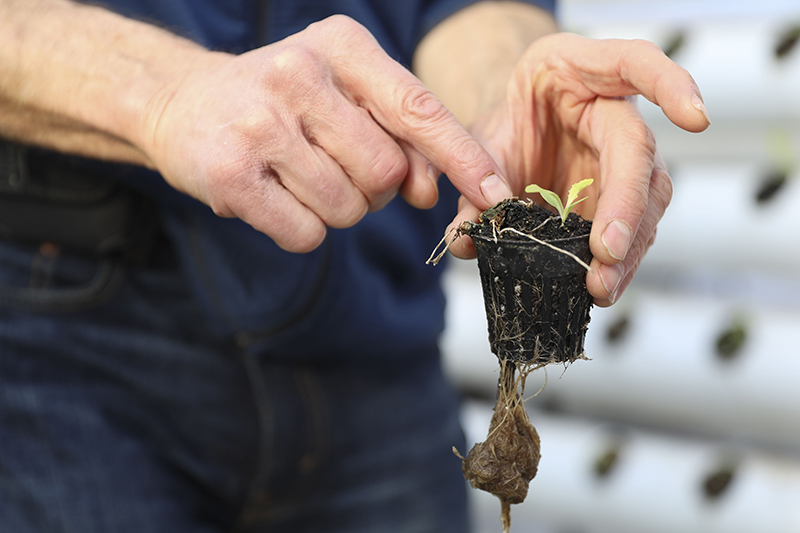
Full-Circle Food Chain Aquaponic Food Production
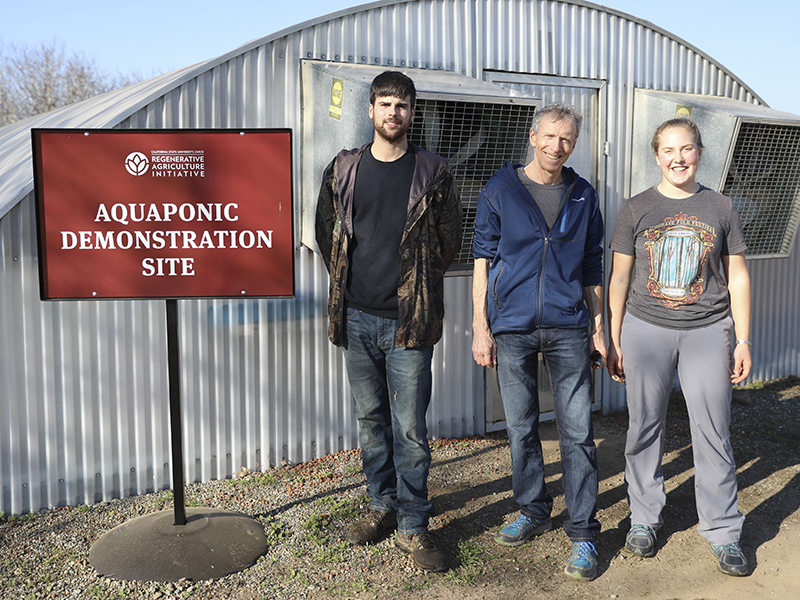
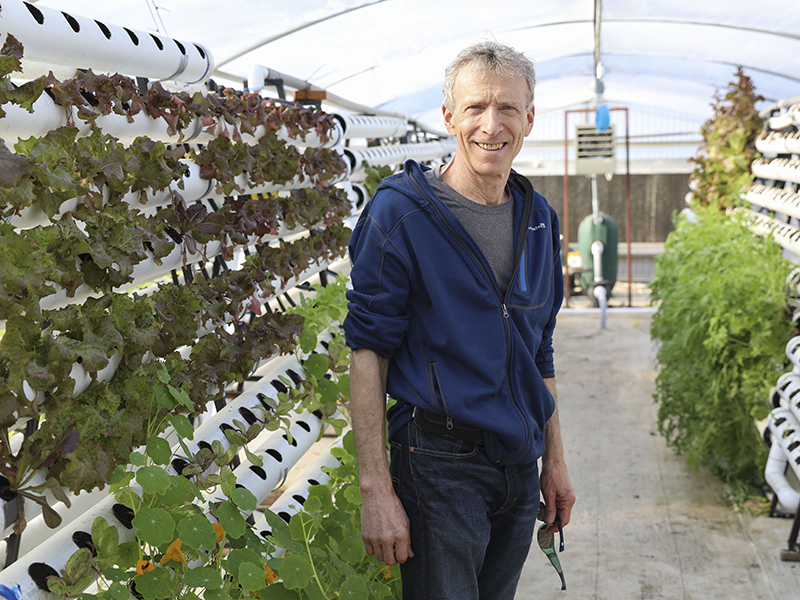
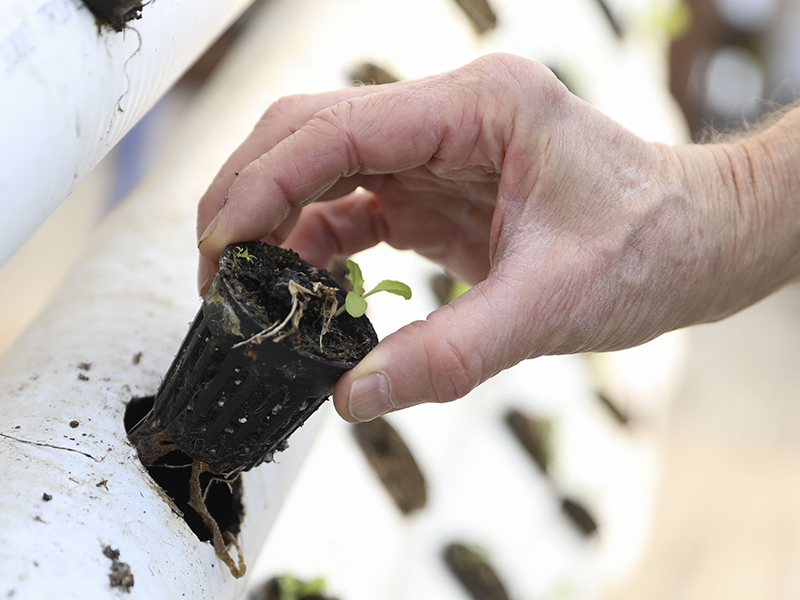
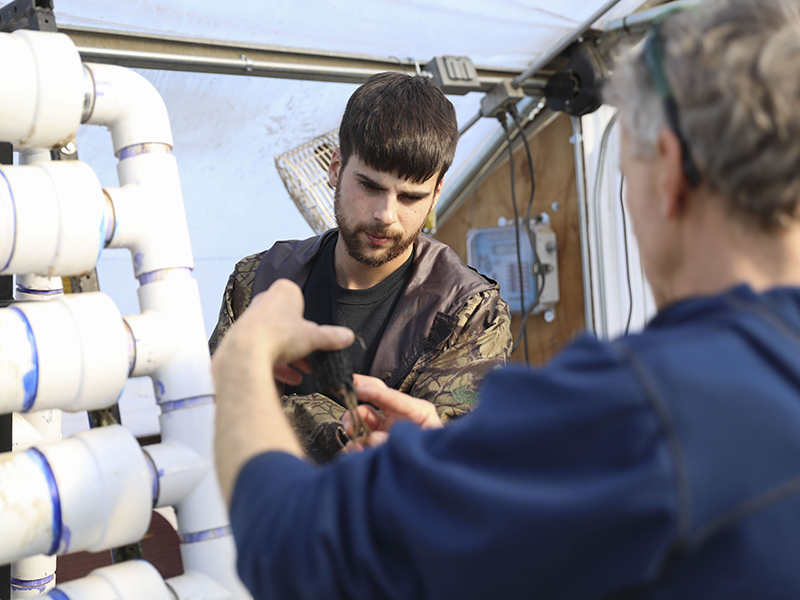
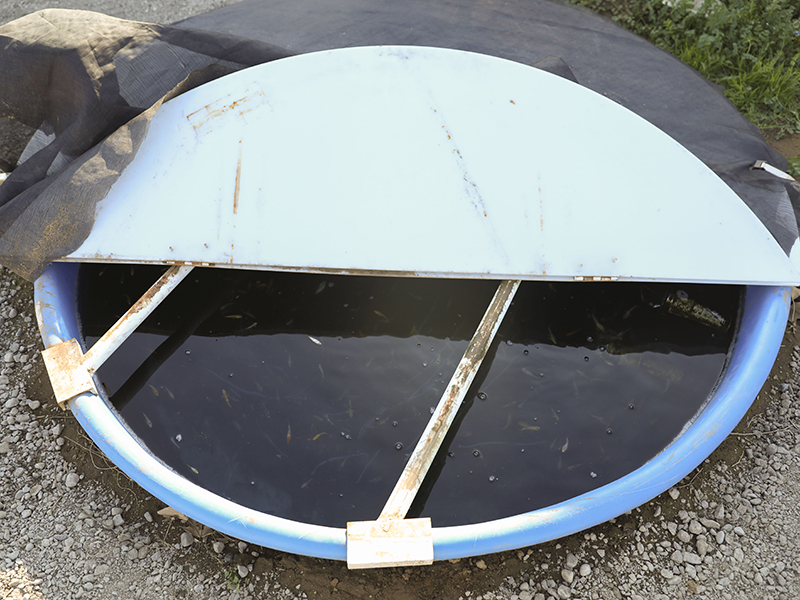
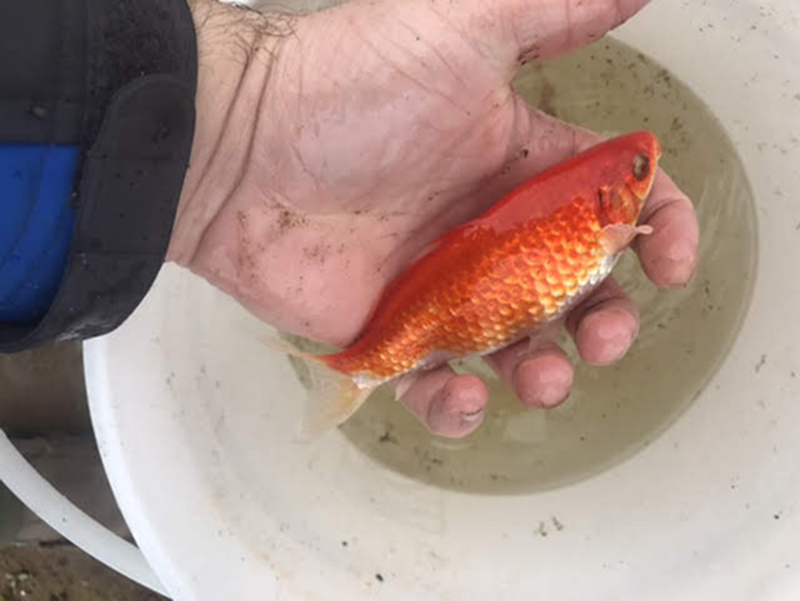
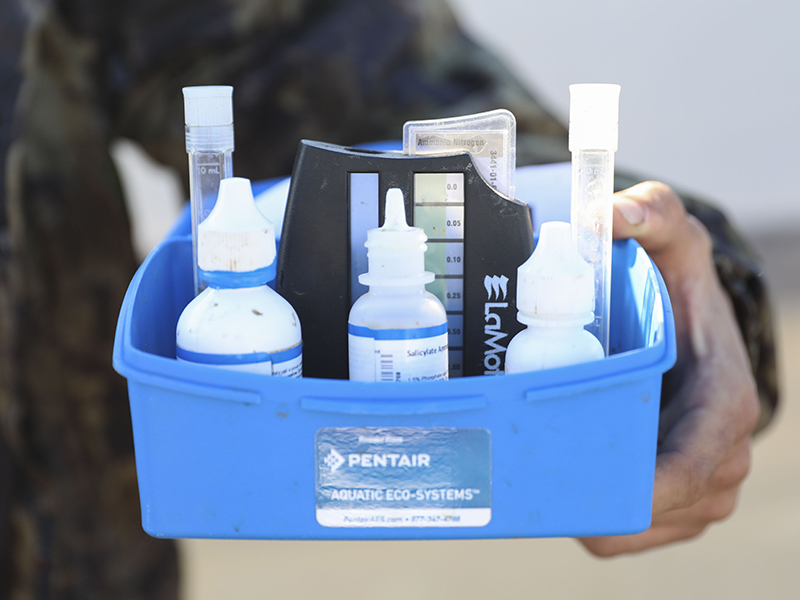
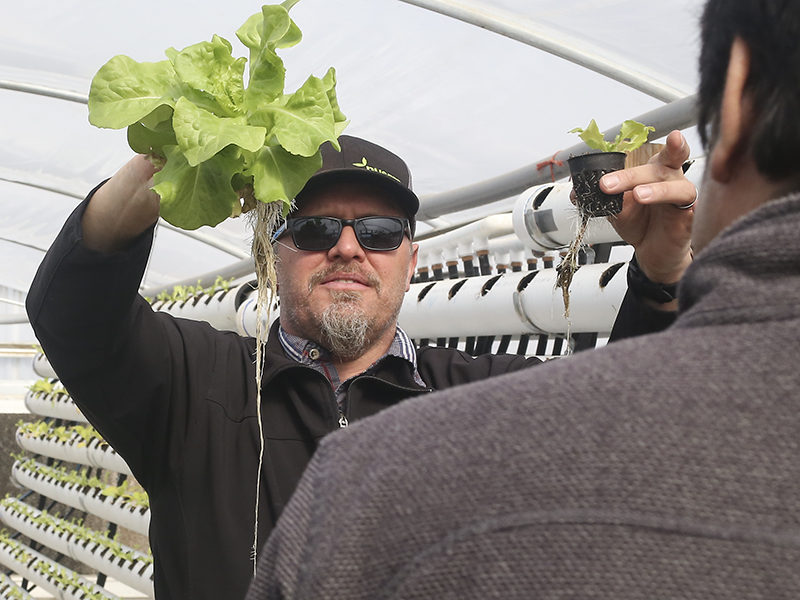
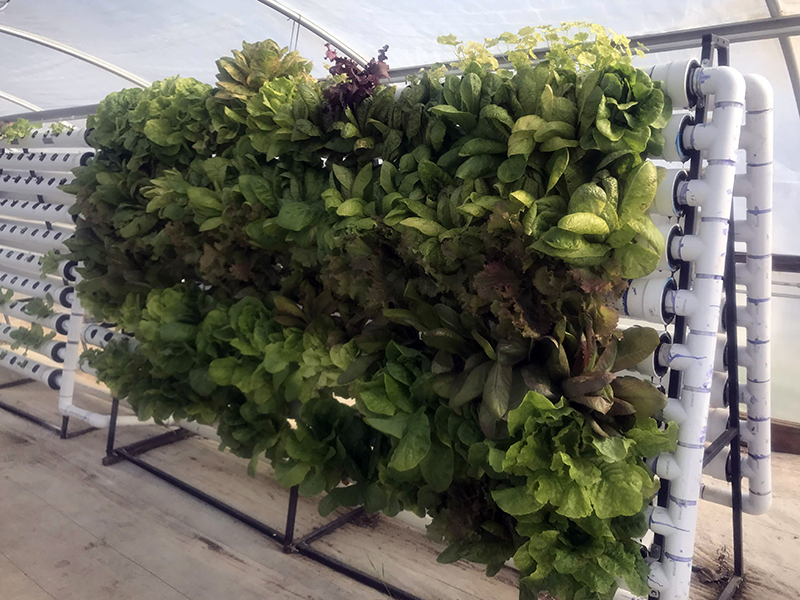
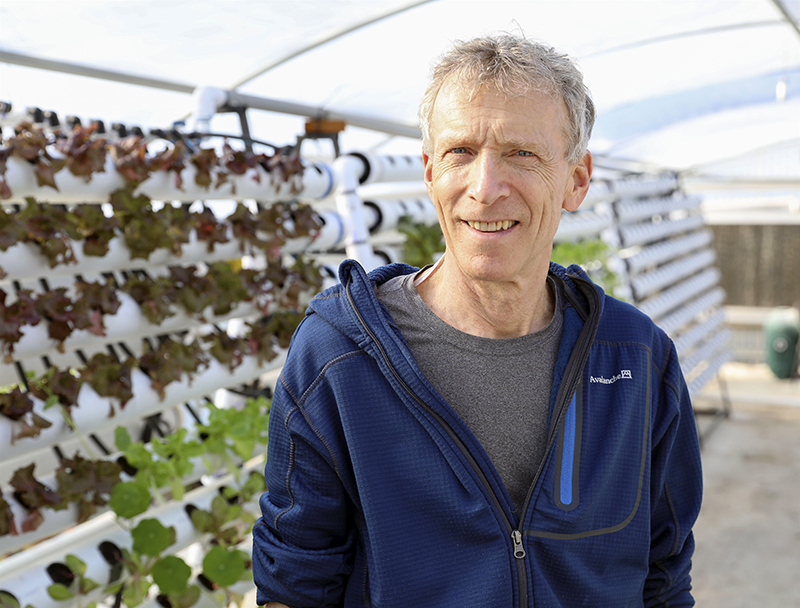 Losses of arable land in combination with a growing population have been impetus for developing new approaches for growing food efficiently in controlled environments. Aquaponics is a combined system of hydroponics (cultivating crops in water) and aquaculture (fish production). Effluent from the fish is treated with microorganisms to biologically transform organic matter into mineral nutrients. The plants extract the nutrients, and the water is recirculated back to the fish tank. Aquaponic systems usually require only 10% of the water necessary to grow similar crops outdoors and can produce as much as 20 times field-crop yields in the same amount of space.
Losses of arable land in combination with a growing population have been impetus for developing new approaches for growing food efficiently in controlled environments. Aquaponics is a combined system of hydroponics (cultivating crops in water) and aquaculture (fish production). Effluent from the fish is treated with microorganisms to biologically transform organic matter into mineral nutrients. The plants extract the nutrients, and the water is recirculated back to the fish tank. Aquaponic systems usually require only 10% of the water necessary to grow similar crops outdoors and can produce as much as 20 times field-crop yields in the same amount of space.
The Aquaponics Unit at the University Farm at Chico State was funded by a $15,000 Student Fee Grant. It was constructed in a refurbished hoop-style plastic greenhouse. Like the related Soldier Fly project(opens in new window), it was designed and built by mechanical engineering students as a senior project. It comprises six arrays of pipes, each capable of supporting the growth of 340 plants. When it is fully planted out, one array will be harvested and replanted every six weeks. For that reason, we have chosen plants such as lettuce, spinach, mustard, basil, and other species that can be harvested during a short six-week cycle. As of last summer (2018) the aquaponics unit is certified for organic production.
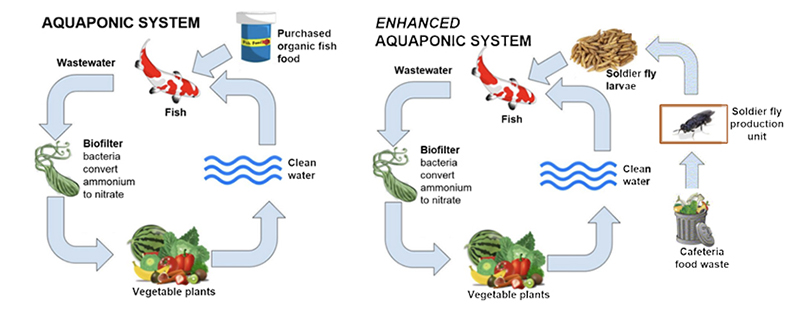
Eventually, the Aquaponics Unit and Soldier Fly research will help create a full-circle food chain right on campus. Pre-consumer food waste from the cafeteria will provide food for the Soldier Fly larvae used to feed the fish. (They are currently fed organic fish food.) The fish tanks set in the ground outside the greenhouse and the plants inside the greenhouse are connected by circulating water. Water containing effluent from the fish is pumped to a biofilter where it is treated with bacteria that convert ammonium nitrogen in the water to nitrate nitrogen, a more suitable nutrient for the plants. The water flows to the plants where they extract the nutrients they need. This cleans up the water which is then circulated back to the fish. The plants grown could then provide food for the campus back at the cafeteria.
The project gives ample opportunity for compiling data on best practices. It's a complicated process that requires maintaining a delicate balance. If there are too many fish relative to plants, the plants won't be able to sufficiently extract the nutrients, and the fish may die. If there are too few fish, the plants will be nutrient deficient. We are also experimenting with leaving soil roots from previous plantings intact when planting new seeds. The idea is similar to no-till practices in soil that allow the microbes that attach to the roots to remain viable.
